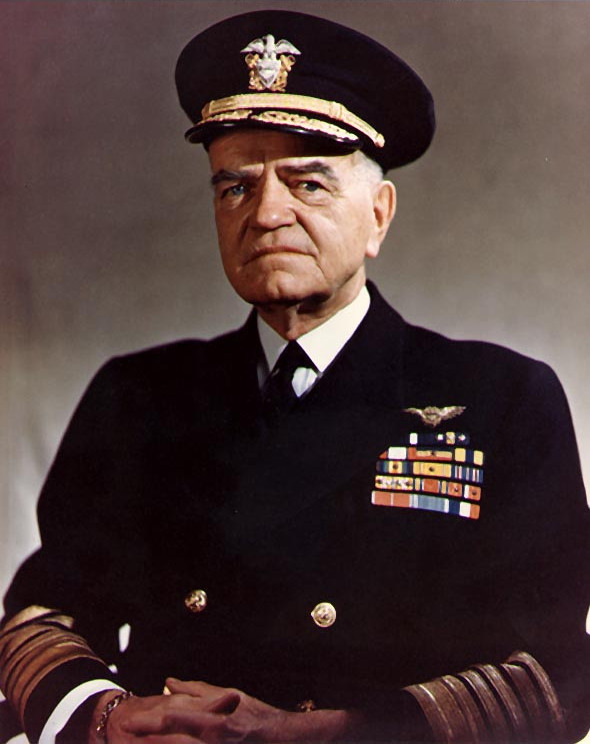Admiral William Frederick Halsey
Admiral William Frederick Halsey was a senior figure in the American navy who fought in World War One and World War Two. He started his career on destroyers, but during the interwar years he switched to aircraft carriers after recognising their potential in future conflicts. In World War Two he served in the Pacific.
Born in 1882 in New Jersey, Halsey became a member of the Naval Academy in 1900. Here he became renowned for his athletic prowess.
He graduated in February 1904 and joined the 'USS Missouri', then transferred to the 'USS Don Juan de Austria'. Halsey spent the required two years at sea and then received his Ensign commission.
In 1909 Halsey was given command of the destroyer ‘USS Du Pont’, and for some time Halsey's served almost exclusively with destroyers. From 1915 to 1917, he worked in the Naval Academy’s Executive Department. Later in World War One, he commanded two destroyers: the 'USS Dale' and the 'USS Osborne'.

In the interwar period Halsey spent more time on destroyers and worked ashore in Naval Intelligence in Washington DC. He became Commander Destroyer Division Three of the Scouting Force in 1930.
In 1934, Halsey launched a new career path in naval aviation. Halsey was certain that aircraft carriers were the new frontier in naval warfare; he thought that they would eventually trump battleships in terms of how important and effective they were in battle. He predicted naval confrontations where battleships and cruisers would work in a defensive role to protect the carriers. This went against the grain of authority in 1930s, when the opposite was believed to be true: carriers worked to protect the capital ships of a fleet.
He was passed as a Naval Aviator in May 1935 and took command of the 'USS Saratoga' for two years. Halsey became a Rear-Admiral in 1938 and he took command of Carrier Division Two in the 'USS Yorktown', and then Carrier Division One in the 'USS Saratoga'.
Halsey became a Vice Admiral in 1940 and was made Commander Aircraft Battle Force and flew his flag on the 'USS Enterprise'. He was serving in this role when Pearl Harbour was struck in December 1941. On 8 December, he set off aboard the USS Enterprise to locate the Japanese ships carrying the planes which had carried out the bombing. This mission was unsuccessful.
Halsey, aboard the USS Enterprise, escorted the USS Hornet to a location, approximately 800 miles off Japan, where the first bombing raid on Tokyo - the ‘Doolittle Raid’ - could be launched. Halsey’s role in this raid meant that he did not participate in the Battle of Coral Sea. He also missed the Battle of Midway because he was ill.
Halsey became Commander South Pacific Forces and South Pacific Area in October 1942, then became a full Admiral only a month later. In May 1944 he became commander of the Third Fleet and was made Commander Western Pacific Task Forces. America was victorious over Japan in the Philippines, Okinawa and the South China Sea during Halsey’s time in this position.
In December 1944 and June 1945 Halsey’s war record was damaged when he led the Third Fleet into the path of successive typhoons. In the December incident, three destroyers, 146 planes and around 800 lives were lost. In the June incident, 75 planes were lost and six men were swept overboard. In both instances a Naval Court of Inquiry gathered information about what had happened; in June 1945 they recommended Halsey be removed from his role. However Admiral Nimitz refused to obey this recommendation.
Halsey was aboard the 'USS Missouri' on 2 December 1945 when Japan signed her formal surrender.
On 11 December 1945 Halsey had a promotion to the role of Fleet Admiral. In 1947 he officially retired from active service. He died on 16 August 1959.
See also: Air Marshal Arthur Harris
MLA Citation/Reference
"Admiral William Frederick Halsey". HistoryLearning.com. 2026. Web.
